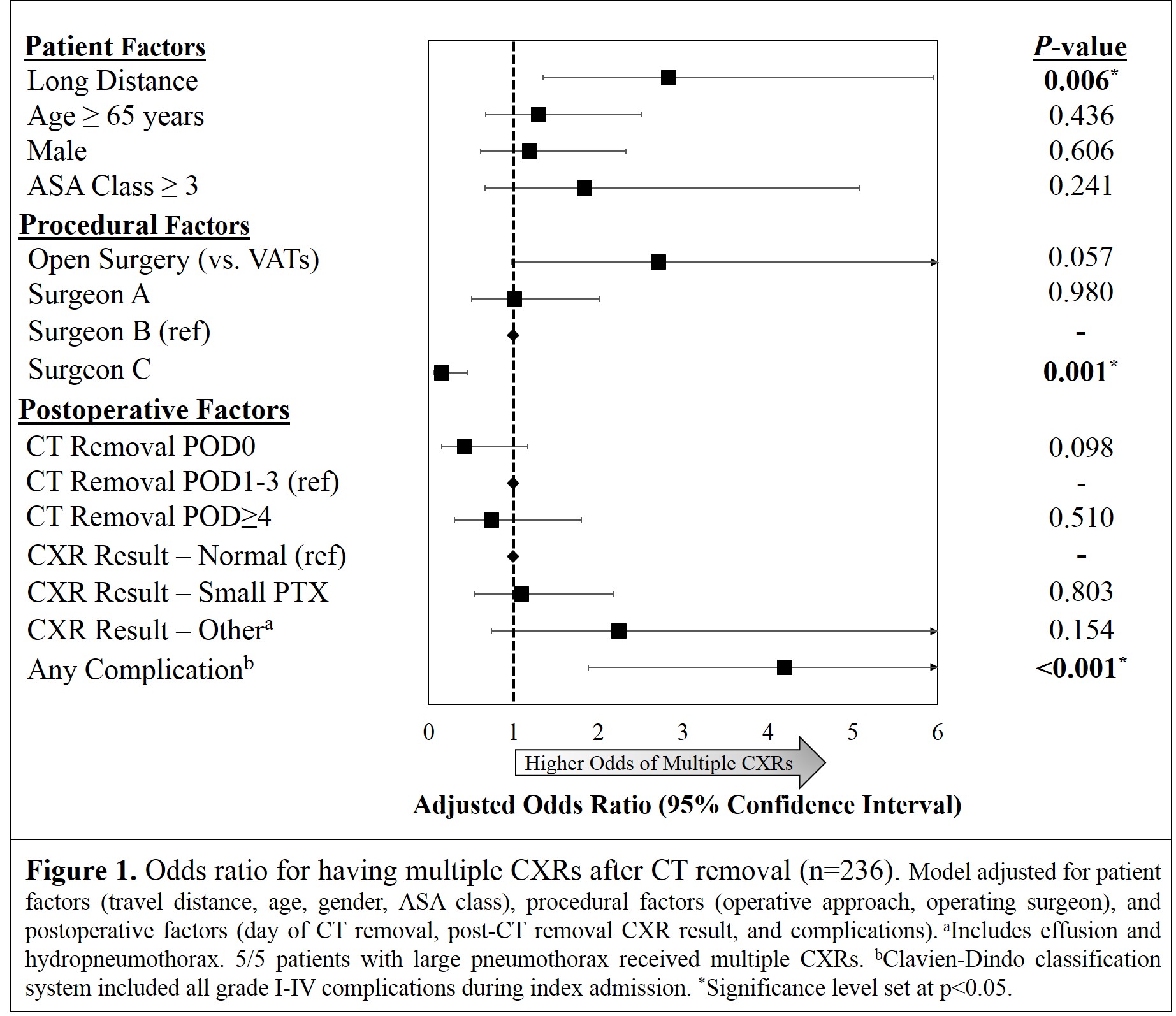Longer Travel Distance Associated with Higher Utilization of Chest Radiographs After Chest Tube Removal in Thoracic Surgery Patients
Eleah D. Porter1, *Kayla A. Fay1, *Spencer W. Trooboff1, *Rian M. Hasson1,2, *Timothy M. Millington1,2, *David J. Finley1,2, *Joseph D. Phillips1,2
1Dartmouth-Hitchcock Medical Center, Lebanon, NH;2Geisel School of Medicine, Hanover, NH
Objective: The effect of travel distance on postoperative management in thoracic surgery patients has not been studied. Our goal was to assess the impact of travel distance on chest radiograph (CXR) utilization after chest tube (CT) removal post-surgery.
Design: Retrospective cohort study. Primary exposure was travel distance, calculated by home zip code to hospital and dichotomized at 50 miles (short vs. long).
Setting: Rural, academic quaternary referral center.
Patients: Adult general thoracic surgery patients with an intraoperative CT placed July 2017 – June 2018. Patients discharged with a CT or who had an immediate clinical change after CT removal prompting intervention were excluded.
Main Outcome Measures: Frequency of CXRs after final CT removal.
Results: 241 patients met inclusion; 64% (155) traveled long distance vs. 36% (86) short distance. On univariate analysis, patients traveling long distance were more likely to have multiple (>1) CXRs after CT removal (38% vs. 23%, p=0.015). After adjusting for patient, procedural and postoperative factors, patients who traveled long distance remained almost three times more likely to undergo multiple CXRs after CT removal (OR: 2.83, 95%CI: 1.35-5.95). The operating surgeon and postoperative complications were also independently associated with the likelihood of multiple CXRs (Figure).
Conclusions: Increased travel distance is an independent factor that impacts CXR utilization after CT removal, highlighting that thoracic surgery patients who travel longer distances for care may be treated differently than those who reside closer. Awareness of this potential bias may improve the design of efficient postoperative care pathways, especially in rural settings. 
Back to 2019 Abstracts




